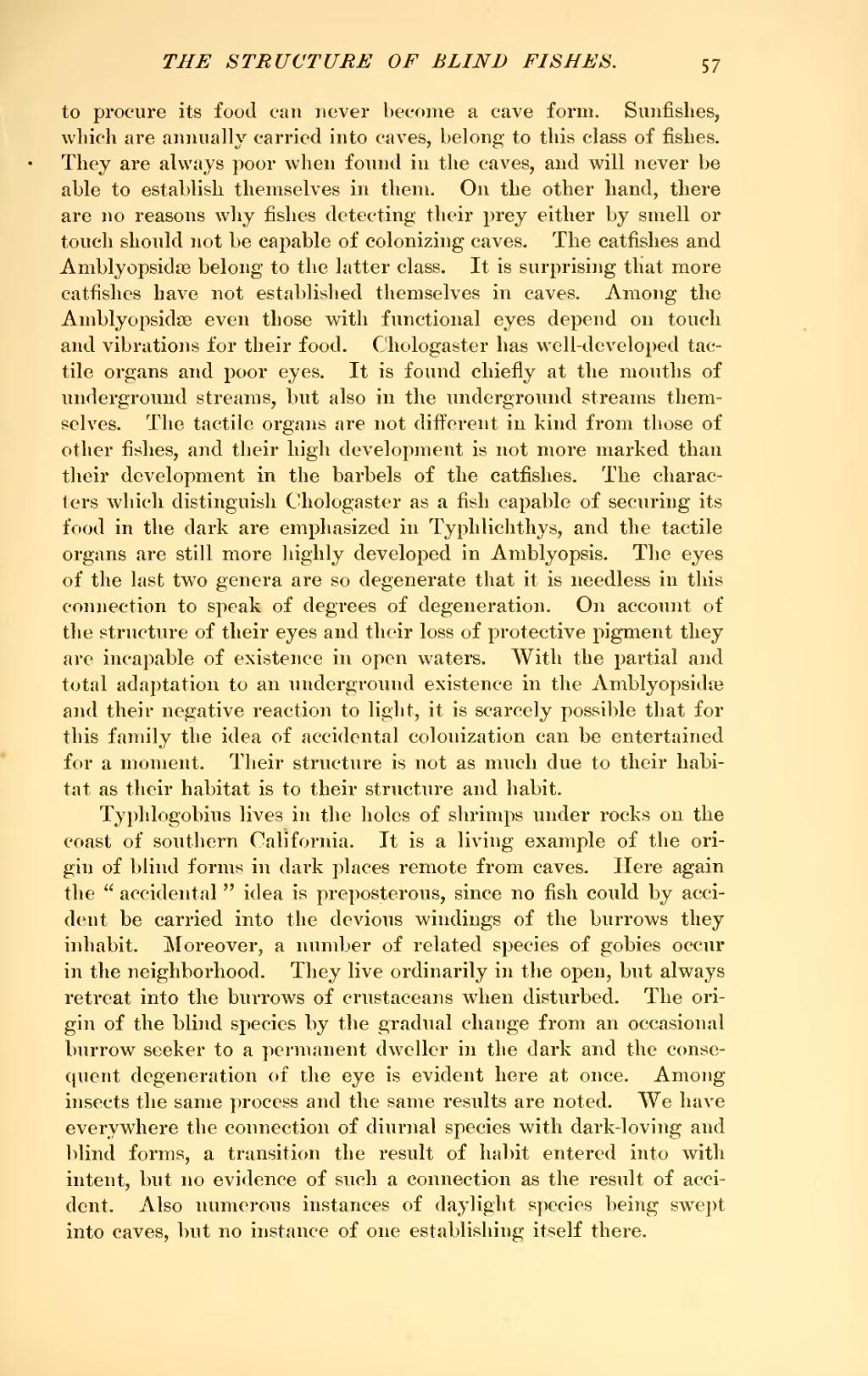to procure its food can never become a cave form. Sunfishes, which are annually carried into caves, belong to this class of fishes. They are always poor when found in the caves, and will never be able to establish themselves in them. On the other hand, there are no reasons why fishes detecting their prey either by smell or touch should not be capable of colonizing caves. The catfishes and Amblyopsidæ belong to the latter class. It is surprising that more catfishes have not established themselves in caves. Among the Amblyopsidæ even those with functional eyes depend on touch and vibrations for their food. Chologaster has well-developed tactile organs and poor eyes. It is found chiefly at the mouths of underground streams, but also in the underground streams themselves. The tactile organs are not different in kind from those of other fishes, and their high development is not more marked than their development in the barbels of the catfishes. The characters which distinguish Chologaster as a fish capable of securing its food in the dark are emphasized in Typhlichthys, and the tactile organs are still more highly developed in Amblyopsis. The eyes of the last two genera are so degenerate that it is needless in this connection to speak of degrees of degeneration. On account of the structure of their eyes and their loss of protective pigment they are incapable of existence in open waters. With the partial and total adaptation to an underground existence in the Amblyopsidæ and their negative reaction to light, it is scarcely possible that for this family the idea of accidental colonization can be entertained for a moment. Their structure is not as much due to their habitat as their habitat is to their structure and habit.
Typhlogobius lives in the holes of shrimps under rocks on the coast of southern California. It is a living example of the origin of blind forms in dark places remote from caves. Here again the "accidental" idea is preposterous, since no fish could by accident be carried into the devious windings of the burrows they inhabit. Moreover, a number of related species of gobies occur in the neighborhood. They live ordinarily in the open, but always retreat into the burrows of crustaceans when disturbed. The origin of the blind species by the gradual change from an occasional burrow seeker to a permanent dweller in the dark and the consequent degeneration of the eye is evident here at once. Among insects the same process and the same results are noted. We have everywhere the connection of diurnal species with dark-loving and blind forms, a transition the result of habit entered into with intent, but no evidence of such a connection as the result of accident. Also numerous instances of daylight species being swept into caves, but no instance of one establishing itself there.
